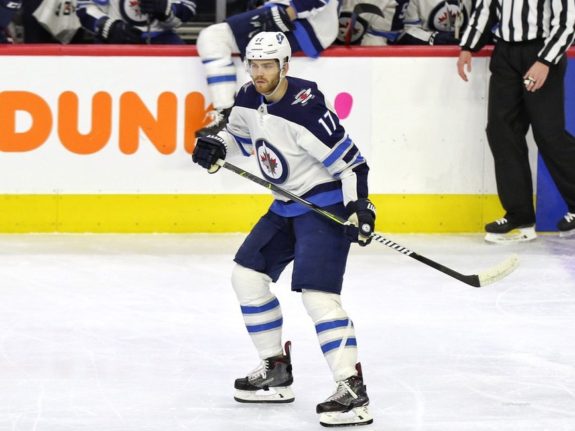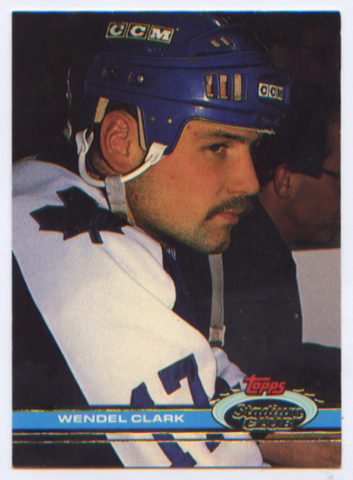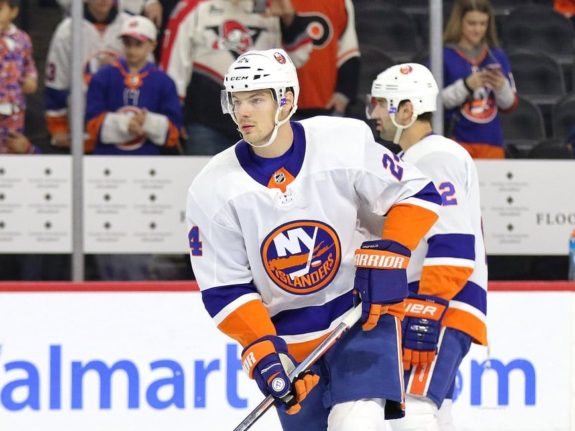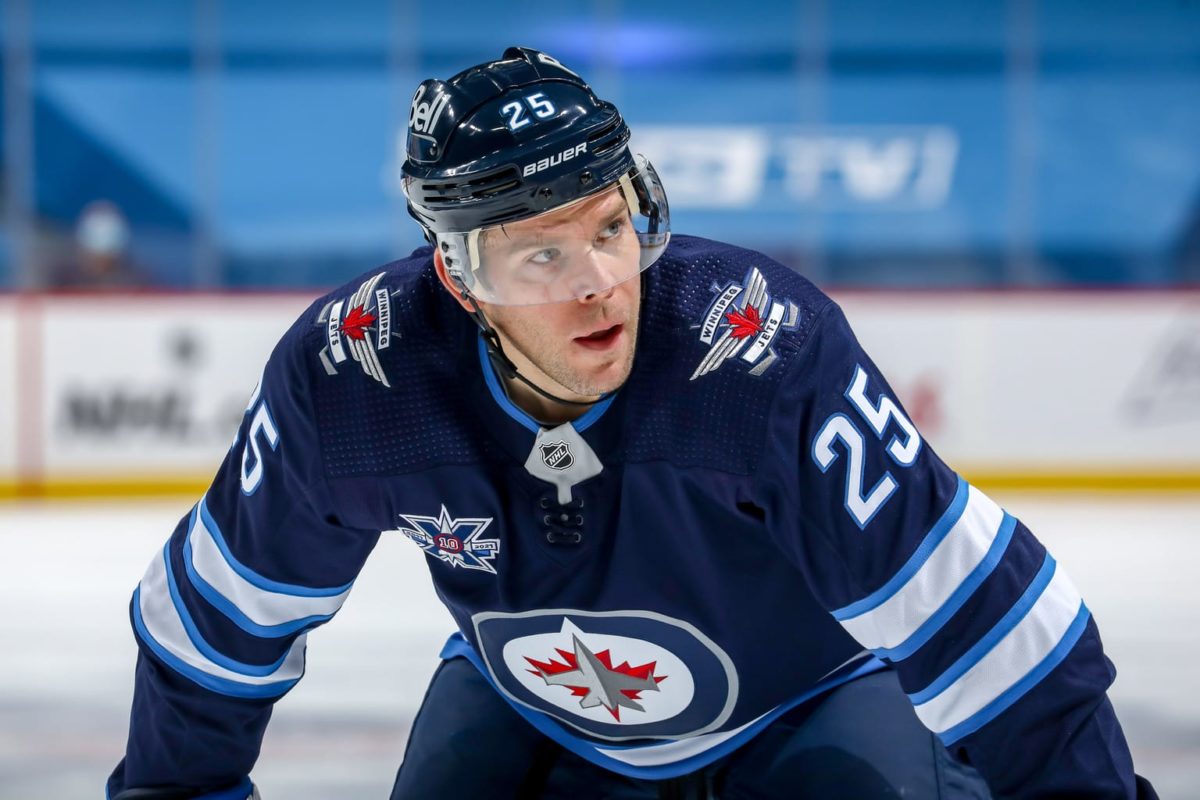If you counted up all of the great things the state of Missouri has given the world — things like Budweiser beer, Mark Twain, championship BBQ, toasted ravioli, a braggy baseball team, to name a few — hockey players wouldn’t be top of the list.
That group might not even make the list.
But lo and behold, the Show-Me State has produced a Hall of Famer, plenty of journeymen, and some rising young stars. Missouri will probably never be considered a major player pipeline, but don’t sleep on that. With several retired players living in the state’s two major metropolitan areas of Kansas City and St. Louis, the future is bright. These stars have children who play in competitive local youth leagues in towns like Affton, Chesterfield, St. Peters, and Kirkwood. Hockey is hot these days.
Like the fictional Jed Clampett, who left Missouri’s Ozarks to live his best life in LA, most of the homegrown talent has made a name for themselves elsewhere. In all, there are just 20 players listed by hockey-reference.com as having a Missouri birthplace. Only Mark Alt from Kansas City (20 games) and a guy named Jim Boo from Rolla, MO (six games) are pro players with Missouri birth roots but were born outside of the immediate St. Louis area. Only two players (Mike McKenna and Cal Heeter) played goalie. McKenna played in 35 NHL games; Heeter just one.
Other Missouri-born players include the Bruins’ Trent Frederic (50 NHL games), who was Boston’s top draft pick in the 2016 Entry Draft; Chris Wideman, who played in 181 NHL games over a four-year career with Ottawa, Edmonton and Florida; Ryan MacInnis, son of Blues legend Al MacInnis, has 16 NHL games on his résumé with Columbus; and Travis Turnbull, son of former pro, Perry Turnbull, has played in three pro games with the Sabres.
So, it is time to Show-Me the All-Missouri Born team (based on a minimum of 200 NHL games played):
Center – Pat LaFontaine
LaFontaine is perhaps the most recognizable hockey player born in Missouri. The NHL Hall of Famer is from St. Louis and was a five-time all-star over his 15-year career. He played with the New York Islanders, the Buffalo Sabres and the New York Rangers. He officially retired in October 1999 because in March 1998, he suffered a career-ending concussion in a game against the Ottawa Senators.
“For sure Pat LaFontaine would have gone down as the all-time points leader [among United States-born players] had he not been hurt,” said former NHL forward Jeremy Roenick, third on that list with 1,216 points. “None of us would have been able to catch him.”
LaFontaine was drafted by the Islanders in the first round of the 1983 NHL Entry Draft, the third overall player taken that year. In October 1991, he was traded to Buffalo by the Islanders with Randy Hillier, Randy Wood and the Islanders’ fourth-round choice (Dean Melanson) in the 1992 Entry Draft for Pierre Turgeon, Uwe Krupp, Benoit Hogue and Dave McLlwain. He played in Buffalo for six seasons before they traded him to the New York Rangers for New York’s second-round draft pick in the 1998 Entry Draft (Andrew Peters) and future considerations.
Over his career, LaFontaine played in 865 games, scoring 468 goals and adding 545 assists for 1,013 points. Perhaps his most famous goal came in Game 7 of the 1987 Patrick Division semifinals against the Washington Capitals. With the decisive game tied 2-2 going into the fourth overtime, LaFontaine took a pass from Ken Leiter and Gord Dineen to pound home the game-winner. The Philadelphia Flyers eventually eliminated LaFontaine’s Islanders and advanced to the Stanley Cup Final, where they lost to the Edmonton Oilers.
LaFontaine scored 8:47 into the fourth overtime to give New York a 3-2 road win against the Washington Capitals in the longest Game 7 in NHL history, according to an NHL.com story about the league’s 100 Greatest Players. “The game, which lasted 6 hours, 18 minutes, is referred to as the ‘Easter Epic’ because it was decided on Easter at 1:58 a.m.”
He also was a marketer’s dream, NHL.com reported, because of how he carried himself on and off the ice. “He was the All-American boy, and always said the right thing,” the hockey site reported.
“As a teammate, I would challenge you to find a nicer person than Patty LaFontaine,” said former NHL forward Bill Guerin, LaFontaine’s United States teammate, to NHL.com.
In 1994-95 LaFontaine won the Bill Masterson Memorial Trophy for perseverance and sportsmanship. In 1992-93, he was second in the NHL in games played (84) and was second in assists that year. His career 468 goals rank him 56th among NHL scorers.

His 1.17 points per game (1,013 points over 865 games) is the best among American-born hockey players, active or retired, The Hockey Writers reported. LaFontaine served as an executive of the Buffalo Sabres as the President of Hockey Operations until March 2014.
In January 2021, NFP, a leading insurance broker and consultant that provides property and casualty (P&C), corporate benefits, retirement, and individual solutions, announced that Pat LaFontaine, “one of the greatest players in National Hockey League (NHL) history,” will serve as an ambassador for its Sports and Entertainment Group.
Center – Clayton Keller
Keller grew up in Swansea, Illinois, but he often played youth hockey in Chesterfield, Missouri — an affluent suburb of St. Louis known for producing young hockey talent. He was a first-round draft pick of the Arizona Coyotes (seventh overall) in the 2016 NHL Draft. He has already played in 273 games in the NHL and has scored 65 goals and added 121 assists for 186 points. He played in the 2019 NHL All-Star Game, and in 2017-18, he led the league in games played (82). He was named First Team All-Rookie in 2017-18.
He has 11 goals and 17 assists for 29 points in the 2020-21 season while averaging 16:57 of ice time for the Coyotes. In nine playoff games, he has scored four goals and three assists.
In 2019, Keller signed an eight-year, $57.2 million contract with the Coyotes, which included a $10 million signing bonus, according to spotrac.com. He played college hockey at Boston University, where he scored 21 goals and added 24 assists in 2016-17.
Keller’s biggest asset is probably his ability to create scoring chances, The Hockey Writers wrote in a 2016 Draft Preview. “He is such a gifted playmaker who can make the difference in any of his shifts. You can always expect something when he is on the ice if it is a fancy move, a great set up or finish off a scoring chance, Keller has it all.”
After a breakout rookie season in 2017-18, where Keller posted 65 points, hopes were high that the Coyotes had finally found the game-breaking forward that they’d spent the better part of the prior two decades searching for, according to The Hockey Writers in January 2021. “However, Keller’s play declined in Years 2 and 3, as he posted 47 and 44 points, respectively, and failed to match the 23 goals or the 42 assists he recorded as a rookie.”
“With the increase in pay comes an increase in expectations and responsibility, and Keller will need to reverse the trend in his play that has emerged over his first three years in the league,” The Hockey Writers reported in January 2021.
Center Joe Vitale
Vitale has made more of a name for himself as the Blues’ color analyst than for his playing career. He and play-by-play man Chris Kerber called the Blues’ historic 2019 Stanley Cup winner, and he remains a popular sports celebrity in his hometown, where his father owns a very successful industrial concrete company. He is a regular on local sports talk shows where he comments on the Blues.
Vitale played from 2011-2016 with the Pittsburgh Penguins and Coyotes. He played in 234 games where he scored 11 goals and added 33 assists for 44 career points.

He averaged 10:52 of ice time per game in his career. He was signed by the Coyotes as a free agent in July 2014, then dealt in 2016 in a complicated deal that saw Vitale get traded to Detroit by Arizona with NY Rangers’ first-round pick (previously acquired, Detroit selected Dennis Cholowski) in the 2016 NHL Draft and Arizona’s second-round pick (Filip Hronek) in the 2016 NHL Draft for Pavel Datsyuk and Detroit’s first-round pick (Jakob Chychrun) in the 2016 NHL Draft.
In 2015-16, he played in just one game for Arizona and had no points but was levied a five-minute major.
Forward Pat Maroon
Pat Maroon is the self-proclaimed “hometown hero” in St. Louis, where his overtime goal against the Dallas Stars lifted the St. Louis Blues to the Stanley Cup Final. Not to be outdone, he left town to become an “out of town” hero for the 2020 Stanley Cup Champion Tampa Bay Lightning. Maroon was born and raised in Oakville, Missouri, a St. Louis suburb.
While some players go their entire career without ever sniffing a Stanley Cup, Maroon has remarkably lifted it twice in two seasons and with two different teams.
Over his 10-year career, he’s played with Anaheim, the Edmonton Oilers, the Devils, Blues and Lightning. He scored 101 goals and added 141 assists for 242 points. His best season was 2016-17 when he scored 27 goals and had 15 assists for 42 points in 81 games. In 2019’s Cup-winning season, he played in 74 games for his hometown team, scoring 10 goals and adding 18 assists for 28 points that championship season.
His historic double-overtime goal in Game 7 of the 2019 playoffs against Dallas gave the Blues a miraculous 2-1 victory. That goal cemented Maroon’s place in St. Louis, and Missouri, sports history.
“During the summer of the infamous 2019-20 Tampa Bay lightning season, one thing was clear, the team needed more grit, and they needed it fast,” The Hockey Writers website reported. “Coach Jon Cooper thought of one player, in particular, a player fresh off a Stanley Cup win with the St. Louis Blues. That player was Patrick Maroon.”
“Training camp was fast approaching, but the Lightning finally got Maroon signed to a one-year, $900,000 contract on August 24th (from ‘Hometown Hero Maroon Moves on from Blues, Agrees to One-year Deal with Lightning. St. Louis Post-Dispatch, 08/26/2019). Maroon ended up playing just one season with the Blues before heading south, but the send-off he got was fitting for a player that had been in St. Louis for 10 years or more,” The Hockey Writers website added.
Forward Paul Ranheim
Paul Ranheim actually played in the most NHL games among all Missouri-born players. Born in St. Louis, he was a second-round draft pick of the Calgary Flames in the 1984 NHL Entry Draft. He played in 1,013 games, where he registered 360 career points on 161 goals and 199 assists.
In 1989-90, Ranheim had his best season statistically. He played in 80 games for the Flames, scoring 26 goals and adding 28 assists for 54 points and a plus-27 rating. That year, he led the NHL in games played with 80. His 21 short-handed goals rank him 65th among all NHL scorers. He also played for Carolina, Philadelphia, and Phoenix in his career.
He played seven seasons for the Hartford Whalers/Carolina Hurricanes, playing in 432 games for that franchise. He would score 20-plus goals two more times in his career — in 1991-92 (21 goals) and 23 goals in 1992-93.
Ranheim missed the majority of the 1990-91 season due to an ankle injury. In March 1994, Calgary traded Ranheim to Hartford with Gary Suter and Ted Drury for James Patrick, Zarley Zalapski and Michael Nylander.
In June 1997, he became a member of the Hurricanes after the Hartford franchise relocated. In May 2000, Carolina dealt him to Philadelphia for the Flyer’s eighth-round choice (later traded to Tampa Bay, who selected Darren Reid) in the 2002 Entry Draft. In December 1992, Philadelphia dealt him to Phoenix for future considerations.
According to an article on NHL.com about Ranheim, after playing 15 years and spending time in Calgary, Hartford, Carolina and Phoenix, aside from his time with the Flyers, he decided to finally do what he always wanted to do.
“I immediately got involved in real estate and home building in Arizona and built a beautiful home out in the desert,” said Ranheim, now living back home where he grew up in Minnesota. “I hired a contractor, an architect and an interior designer for the project, but I wanted to be involved every step of the way – so I was.”
Ranheim built a beautiful home – one that he had conceptualized in his own mind and brought to fruition, NHL.com reported.
“It is when that happens, when you see something that you want to make, and then you complete it just as you saw it that you get a real sense of satisfaction,” Ranheim told the website.
But, the economy went south, and the real estate market went with it. Ranheim was an economics major at the University of Wisconsin, so he was no dummy, and bailed out of the construction and contracting business – for a little while anyway – to pursue other business ventures, NHL.com noted, adding that he and a couple of friends created their own Arizona-based technology company called Keyware.
Forward Adam Lowry
Winnipeg’s third-round pick (No. 67) in the 2011 NHL Draft, the St. Louis-born Lowry actually grew up near Calgary, where his father, Dave Lowry, played the final years of his NHL career.
According to his player bio on NHL.com, Lowry’s hockey education “included up-close-and-personal observations of the likes of Jarome Iginla, Patrick Marleau and Stu Barnes. The lessons learned from them and others helped the 6-foot-5, 210-pound Lowry become a hard-charging center who enjoys using his massive frame to take the play to the opposition,” the site reported.
He has played seven years with the Winnipeg Jets, logging 445 games. He’s scored 64 goals and added 77 assists for 141 points and a plus-4 rating. He led the league in games played in 2016-17 with 82 games, and again in 2020-21, when he played in 37 games in the shortened season, still tops in the league.
As a rookie during the 2014-15 season, Lowry led the Jets with 255 hits while finishing tied for 15th among all rookies with 11 goals. Lowry scored a memorable first NHL goal in the sixth game of his rookie season, NHL.com reported. On Oct. 21, 2014, he was skating through the high slot when he tipped a shot from the point past Carolina Hurricanes goalie Anton Khudobin for the game-winning goal of a 3-1 Jets victory.

On Dec. 9, 2014, Lowry’s two second-period goals less than two minutes apart broke a 2-2 tie with the Stars and gave him the second game-winning goal of his rookie season, NHL.com noted.
Lowry played in all four of Winnipeg’s games during the 2015 Stanley Cup Playoffs. His first NHL playoff goal, less than three minutes into the first game of the Jets’ first-round series against the Anaheim Ducks, was also the first postseason goal for the franchise since it relocated from Atlanta for the 2011-12 season. Lowry had assists in each of Winnipeg’s next two games to give him three points and tie him with Bryan Little as the team’s playoff scoring leader that year, NHL.com reported.
Lowry continued to find ways to contribute off the score sheet in his second season. In 2015-16, he finished second on the club with 187 hits, and among Winnipeg forwards, he finished second in blocked shots (48) and fourth in takeaways (33). The showing earned Lowry a two-year contract in the summer of 2016. He had an NHL career-high 15 goals in 2016-17 and became a useful bottom-six forward, NHL.com noted.
Forward Cam Janssen
Janssen, a fighter, played nine years in the NHL with the Blues and the New Jersey Devils. The Devils drafted him in the fourth round of the 2002 Draft. He logged 774 penalty minutes in 336 NHL games and was fifth in the league in penalty minutes in 2009-10.
In 2008, he was traded to St. Louis by New Jersey for the popular Bryce Salvador.
In August 2016, the Nottingham Panthers of Britain’s Elite Hockey League announced Janssen’s retirement from professional hockey, according to a story about his retirement on KMOX in St. Louis.
“Cam’s a great guy and he was as good, as in tears, when he told me what had happened, but he’s landed a big job with a sports network on FM radio and will also be working with his beloved St. Louis Blues,” said Panthers head coach Corey Neilson on the team’s website.
Janssen helped the Nottingham Panthers win two trophies that season (2015). He was signed to a two-year deal when he announced he was quitting the game to head to the broadcast booth.
Forward Landon Wilson
Landon Wilson is the son of retired NHL player Rick Wilson. He was drafted by the Toronto Maple Leafs in the first round of the 1993 NHL Entry Draft. He had a 10-year pro career with the Boston Bruins, Coyotes, Colorado Avalanche, Penguins and Dallas Stars.
Wilson played in 375 NHL games and scored 53 goals along with 66 assists for 119 points. He logged time in 336 games, amassing 774 career penalty minutes.
His journey within the pros was a winding one. In June 1994, the Maple Leafs traded him to the now-defunct Quebec Nordiques along with Wendel Clark, Sylvain Lefebvre and the Maple Leafs’ first-round pick (Jeffrey Kealty) in the 1994 Entry Draft for Mats Sundin, Garth Butcher, Todd Warriner and Philadelphia’s first-round selection (previously acquired, later traded to Washington — Washington selected Nolan Baumgartner) in the 1994 Entry Draft. A year later, in 1995, he was transferred to the Avalanche after the Quebec franchise relocated.

By November 1996, Colorado traded Wilson to Boston with Anders Myrvold for Boston’s first-round choice (Robyn Regehr) in the 1998 Entry Draft. In 2000, he signed as a free agent with Phoenix. He suffered an eye injury that forced him to miss the majority of the 2002-03 season. He was traded to the Penguins in 2004 for future considerations. In 2004, he signed to play pro hockey in Finland, then signed as a free agent with the Swiss club Davos, then later Lugano. In July 2008, he signed with the Dallas Stars, playing in 27 games his final season.
In 2012, bleacherreport.com said Wilson’s selection by the Maple Leafs in the 1992 Draft was the franchise’s eighth-worst draft pick in its history. Players taken after Wilson, it noted, included Saku Koivu, Todd Bertuzzi, Jamie Langenbrunner, Bryan McCabe, Vinny Prospal, Miroslav Satan, Darcy Tucker, Andrew Brunette, Pavol Demitra, Kimmo Timonen and Todd Marchant.
“The Leafs saw a tougher than nails, scoring power forward. A hulking 6’3″, 230-pound monster who could be a fan favorite,” the website reported. “What they got was someone who couldn’t hit their stride in the NHL and had his best years in the minors, and not up with an NHL team.”
But, other than that…
Forward Brandon Bollig
Bollig played five years in the league with the Chicago Blackhawks and later the Flames. He ended up playing in 241 games, scoring 10 goals and adding 13 assists for 23 career points. Bollig, a native of St. Charles, Missouri, won a Stanley Cup with the Blackhawks in 2013. In 2013-14, he was second in the league in games played with 82 games.
Bollig signed as a free agent with Chicago in April 2010. Chicago would trade him to Calgary for Pittsburgh’s third-round pick (previously acquired, Chicago selected Matt Iacopelli) in the 2014 NHL Draft.
“NBC Sports Chicago Blackhawks Insider Charlie Roumeliotis caught up with 2013 Stanley Cup champ Brandon Bollig on the latest Blackhawks Talk podcast. Among the topics discussed were what it’s like for a healthy scratch to get dressed and meet their team on the ice when they’re about to win the Cup,” according to an article on NBCsports.com.
Bollig and his pals didn’t have much more time to get out and join their teammates on the ice in Boston after 2013’s Game 6 of the Final that saw the Hawks hoist Lord Stanley’s trophy, NBC Sports reported. The forward was a healthy scratch in Game 6 but had played earlier during the series against the Bruins.
“We go in, we’re leading the series 3-2, we’re in Boston, luckily the Hawks are gracious enough to fly all of our families there, so that makes it even more special,” Bollig told NBCSports.com. “Us guys that didn’t play that game: it was me, Dan Carcillo, Jamal Mayers, Ben Smith, I think even Ryan Stanton was one of our guys in there, there were a couple other guys in the room with us, probably five or six of us.”
Defenseman Scott Mayfield
Mayfield made his NHL debut with the Islanders against the Columbus Blue Jackets on April 6, 2014. The big, 6-foot-4, 200-pound defenseman scored his first NHL goal against the Sabres on April 9, 2016.
He became a full-time NHL player the following season and scored 12 points (two goals, 10 assists) in 47 games, according to his player bio on NHL.com. The Islanders signed Mayfield to a five-year contract on Jan. 4, 2018.
According to a scouting report by Hockey’s Future, Mayfield was described as “very much a prototypical NHL defenseman — a big man who is a strong skater and possesses a natural feel for the ice and the puck. A free-wheeling defenseman in junior hockey, he still has a willingness to join the play but has a physical bite to his game. Offensively, he has a booming point shot and underrated hands when getting in closer to the net. One of the more consistent and durable defensemen in the Islanders’ system, Mayfield does not have the flash and sizzle of some of the other young defensemen but appears equally capable of being a reliable blueliner at the NHL level one day.”

“He does not have some of the high-end skills of some of the other Islanders’ defense prospects, but his combination of toughness and steady play in his own end make him valuable in a lower line role and a dependable call-up option,” the scouting web site reported.
Mayfield played 79 regular-season games for the Islanders in 2018-19 and helped New York reach the second round of the Stanley Cup’s Eastern Conference playoffs, where registered two assists in eight games. Mayfield had 13 points (five goals, eight assists) in 67 games when the 2019-20 season was paused in March 2020 due to concerns surrounding the coronavirus.
Defenseman Chris Butler
According to a story on The Hockey Writers, Butler spent his time floating between the NHL and AHL. Before joining the Blues in 2014, he played for three NHL teams, where he was known as a reliable and steady two-way defenseman. The Buffalo Sabres drafted Butler in 2004 and played three full seasons for them before they traded him to the Flames for a second-round pick in 2012 (now Jake McCabe). In July of 2014, Butler was a free agent and opted to sign with his hometown Blues.
Butler only logged 33 games for the Blues in 2014-15, but he tallied nine points and had a plus-eight rating. Since the 2014-15 season, Butler has struggled to stick with the Blues, playing in a total of just 12 games over that span. In 2015-2016, Butler appeared in six games for the Blues, where he had a plus-1 rating and logged just over 13 minutes of ice time per game.
Check These Birth Certificates
The Tkachuk brothers — Brady and Matthew — grew up in St. Louis, where their dad Keith starred for the Blues. People often mistake the brothers as being born and raised in the Show-Me State, but they are actually listed as having Arizona birth certificates.

Paul Stastny, the son of NHL great Peter Stastny, is also sometimes mistaken for being Missouri-born and bred. He went to high school at Chaminade College Prep — the same school that would produce Bradley Beal of the NBA’s Washington Wizards, Jayson Tatum of the Boston Celtics, and NBA journeyman David Lee, among others. Stastny was born a Canadian citizen in Quebec City, Quebec.
Wayne Gretzky, the Great One, was technically born in Brantford, Ontario, but his wife, Janet Jones, grew up in suburban north St. Louis County. Yes, it is a bit of a stretch, but any time you can play “Seven Shades of Wayne Gretzky,” you make it work.
With a booming youth hockey program in place, and the talent pool getting deeper each year, the number of players with Missouri birth roots is sure to grow over the coming generations.
Rob Staggenborg covers the St. Louis Blues for TheHockeyWriters.com, as well as hosting several NHL podcasts. He enjoys St. Louis style pizza with gooey cheese, and sitting for hours on end in metro St. Louis traffic listening to sports podcasts. He is a proud U.S. veteran. Visit his website at brockbanner.com
Follow his Blues coverage at STLFanReport.com and on Twitter @RealBrockBanne1
